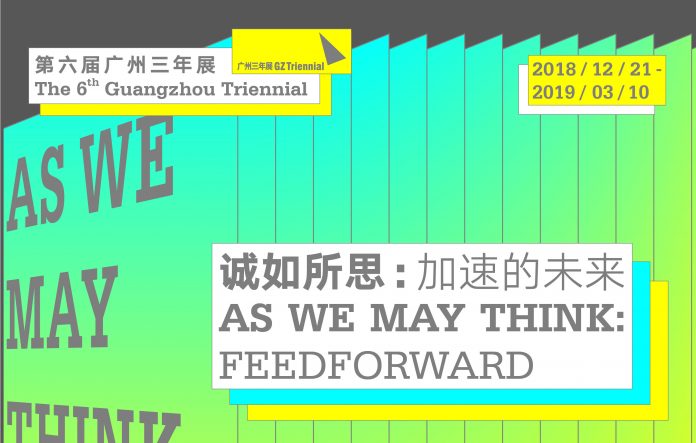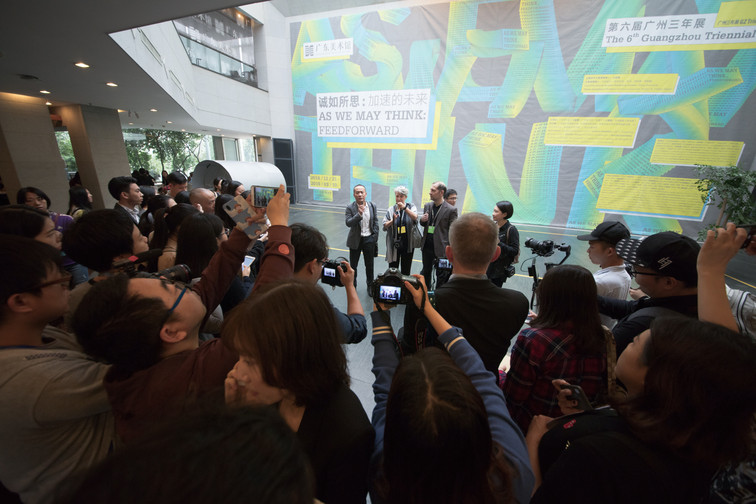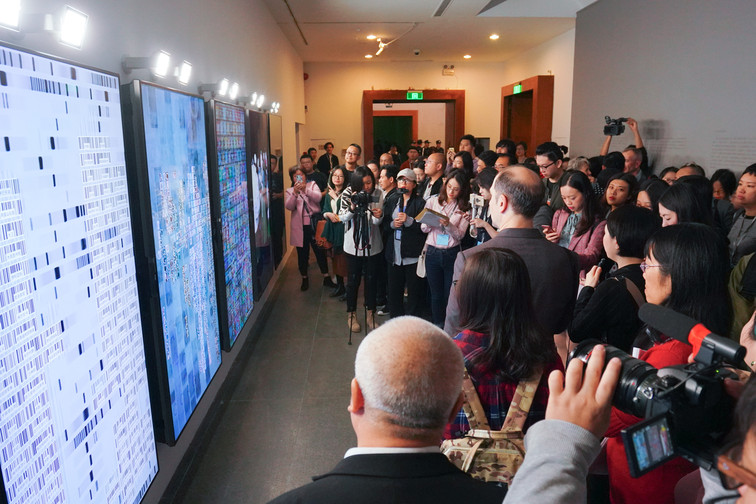
“想象一个未来的设备……人们可以在其中存储所有的书籍、记录和通信信息,并且可以以极高的速度和灵活性与这种机械设备进行互动咨询。这种设备是对人本身记忆的直接扩大和补充。”
——范内瓦·布什
“Consider a future device … in which an individual stores all his books, records, and communications, and which is mechanized so that it may be consulted with exceeding speed and flexibility. It is an enlarged intimate supplement to his memory.”
Vannevar Bush

1945年夏天,美国工程师范内瓦·布什在波士顿的《大西洋》杂志上发表了一篇题为“诚如所思”的文章,设想了一种如上所述的通用通信设备,预示了信息社会的到来。在过去的四分之三个世纪里,一个有远见卓识的人所思考的东西已经成为一种新的世界秩序。在这新的秩序中,曾经假想的“扩展存储器”不仅化身为强大的现实,而且加速发展成为一个遍布全球、相互连接的机器网膜,它们在全球范围内运行,引发了前所未有的变革,从而永远重新定义了当代之工作和娱乐,政治和经济的概念,甚或生命本身的意义。在摩尔定律没有放缓迹象的今天,技术依然日新月异地突破界限,加之人类纪不可阻挡的侵蚀,人类的智慧所能想象的,以及人类还可能希冀的幻想亟待一种超越人类自身能力的思考。未来在“前馈”的不可磨灭的力量下日趋沉重。“前馈”作为一个控制论用语,蕴含着前置性管控以及先发制人的感知机制,暗示了一种重新调制感觉中枢的新的认知领域:“在这个新世界中,网络计算感知,跟踪和记录现在以预测和塑造未来 在很大程度上独立于人类行为(Mark B. Hansen)。曾经属于生物学范畴的感官正在被技术媒介化,这些感觉不断在置换,增强或离弃生物界定的感觉力,预测人类意志之外的命运,从而向道德——美学规范发难并引发焦虑和不安。存在似已深陷一种既是随机亦是给定的悖论。一种新的现实已然使传统的智慧显得贫瘠。
In the summer of 1945, the American engineer Vannevar Bush published an essay in the Bostonbased journal The Atlantic. Titled “As We May Think,” the paper imagined a universal communications apparatus which anticipated the advent of an information society. Over the last threequarters of a century, what was then pondered by an insightful individual, who was able to think beyond the limits of his time, has materialized itself as a new world order in which the once dreamed-up Memex has not only taken on a much more powerful incarnation but also evolved, multiplied and accelerated into a pervasive, all-encompassing membrane of connected machines that operate on a planetary scale, giving rise to the unprecedented transformations that have forever redefined contemporary notions of work and play, politics, economics, and culture, or life as a whole. Today with Moore’s law seeing no sign of slowing down and technological breakthroughs accelerating each passing day, along with the irrevocable encroachment of the Anthropocene, what can yet be thought of by human ingenuity and what is yet to be imagined through human fantasy demand a thinking beyond the very capacity of human herself. Future looms large with the indelible force of feedforward. Invoking a cybernetics parlance of proactive control mechanism capable of pre-emptive sentience, feedforward insinuates a new type of perceptual domain, re-calibrating our sensorium: “In this new world networked computation senses, tracks, and records the present in order to predict and shape the future in large part independently from human action.” (Mark B. Hansen) What were once attributes of the biological are now given away to technologically mediated senses that invariably transpose, augment and dislocate the biotically delineated sense faculties, preordaining a destiny outside of human volition, problematizing the ethical-aesthetic norms and prompting anxiety and insecurity. As existence has become a paradox of the aleatory and the liminal ingrained at the same time with the anticipatory and the predestined, a new reality descends in which inherited wisdom no longer suffices.

第六届广州三年展以“诚如所思,加速的未来”为题,将这篇开创性文本的深远影响延伸到艺术领域,以反映过去几十年来技术进步的轨迹及其在整个社会范围内的回响。本次三年展旨在探讨由技术构建的时空,从真实到虚拟所产生的多重影响,通过审视从地理维度乃至宇宙前景的创造性努力来应对所面临的挑战和机遇,并通过人类和非人类、生物与机器、有机与无机的愿景的联盟,提供一种关于新的生态可能性的场景,使得经过重整的人文主义可以在物的集合(此处借用布鲁诺·拉图尔创造的术语)中共生并互惠地成长。
Titled As We May Think, Feedforward, extending this seminal text’s far-reaching ramifications into the artistic domain as a way to reflect on the trajectories of technological advances and their reverberations throughout the social sphere over the past decades, the 6th edition of Guangzhou Triennial seeks to address the multiple implications engendered by such a technologically constructed time-space – in the real and through the virtual – by examining creative endeavors both from geographical purviews and from cosmic prospects in responding to the challenges and opportunities at stake and to think, once again, through a new alliance of visions by humans and nonhumans alike, machines and flesh with equal footing, organic and inorganic hand in hand, an alternative outlook for a new possibility of ecology whereby a retooled humanism may thrive in a Parliament of Things (to borrow a term from Bruno Latour) in symbiosis and reciprocity.
本次三年展的主题展览分为三个部分,各自以其分主题共同编织了一系列相互关联的出入点,凸显出一个借由真实和虚构来阐释这个“诚如所思”的世界,以使我们得以再一次以无畏的视野对转瞬即逝的未来进行思考。
The Triennial Theme Exhibition is organized in three parts each addressing a particular focus in question. Together they weave a web of interconnected entry points and exits, underlining a network of facticity and speculations that encapsulate the world as we know it now through imaginative impulse and as we may think it once again by an unfettered vision to grasp a fleeting future.
诚如所思:加速的未来
As We May Think: Feedforward
第六届广州三年展
The 6th Guangzhou Triennial
2018年12月31日至2019年3月10日
31st December, 2018 to 10th March, 2019
主展场 | Main Venue
广东美术馆
Guangdong Museum of Art
NO.38, Yanyu Road, Ersha Island, Guangzhou
广州市二沙岛烟雨路38号
上午九点至下午五点
9:00 – 17:00, Mondays Closed
文献馆 | Archive Exhibition
广东美术馆7号展厅
Hall 7, Guangdong Museum of Art
分展场 | Satellite Venue
华侨城盒子美术馆
OCT Boxes Art Museum
平行展场 | Parallel Venue
广州美术学院美术馆、岭南画派纪念馆、华南农业大学艺术学院美术馆、33当代艺术中心、紫泥堂艺术小镇、广州53美术馆
Art Museum of GAFA, Memorial Hall of Lingnan School of Painting, Art Museum of SCAU, 33 Contemporary Art Centre, ZiniTown of Art, 53 Art Museum





